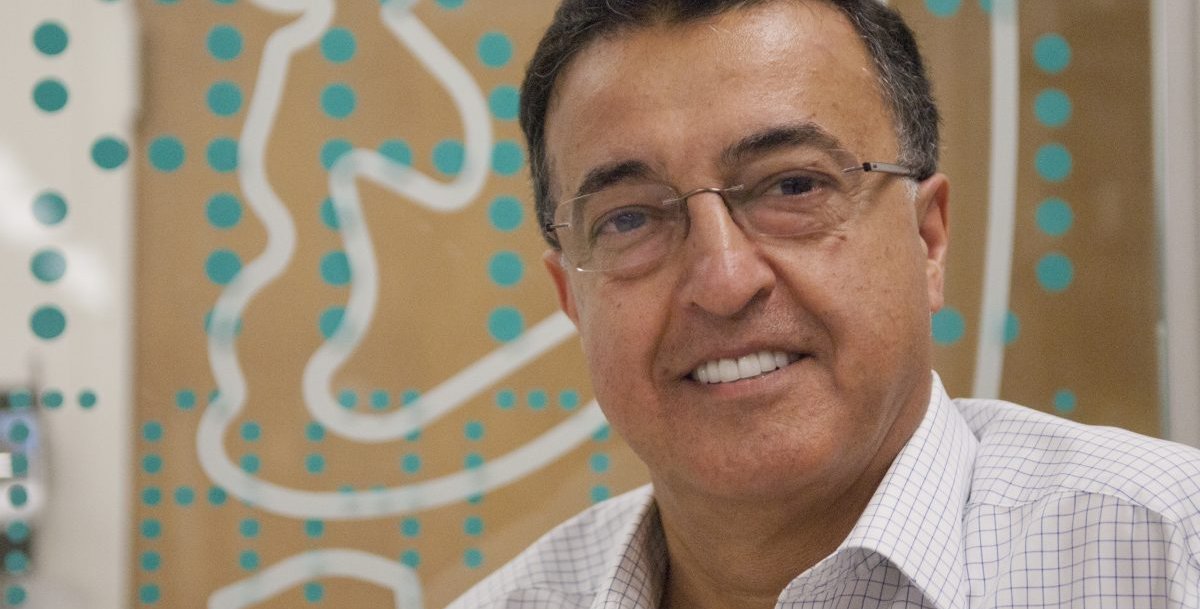
Mory Gharib: Living—and Giving—the Caltech Dream
In appreciation for the opportunities Caltech afforded him, Mory Gharib created an endowed fellowship fund to support new generations of Caltech graduate students.
Growing up in Tehran, Iran, Mory Gharib (PhD '83) attended large, crowded schools. He was the kid who always raised his hand in class and asked tough questions. He craved one-on-one time with his teachers, which seldom came to pass.
So when the young Gharib read a newspaper article about a school in California with a three-to-one student-faculty ratio, it seemed almost unimaginable. Over the years, though, that school—Caltech—remained in his thoughts.
"It was ingrained in my mind that there was a place where you might have a chance of interacting with your teachers and instructors," he says.
Years later, Gharib finally made it to Caltech as a graduate student. Since that time, he has built a distinguished career as a researcher, mentor, inventor, entrepreneur, leader, and benefactor. And he has continued to search for the answers to tough questions.
Today he serves as the Hans W. Liepmann Professor of Aeronautics and Bioinspired Engineering, director of Caltech's Graduate Aerospace Laboratories, and vice provost.
Soon after Gharib and his wife, Shoreh, came to Pasadena in 1978, the Iranian Revolution erupted. "Suddenly, the country we knew wasn't there," he recalls. Gharib—along with 11 other Iranian citizens studying at Caltech—faced an uncertain future. His family back home was in danger, his educational funding was cut off, and Iran's ruling government was not interested in having students like him return.
But the tumultuous event that jeopardized Gharib's studies and career became the catalyst for solidifying his place at Caltech.
Then-Institute president Marvin L. Goldberger sent a personal letter to each Iranian student at Caltech and assured all of them that they could continue their education. The Institute would help them, financially and in any other way it could, no matter what.
"Caltech became our home, not because of the physical space but because of the environment, culture, and support," says Gharib. "It was not just my alma mater, it was family."
I couldn't have done this anywhere else. Caltech took care of me, and I have to take care of it.
Although he earned his doctorate from Caltech in aeronautics and fluid dynamics, Gharib made a promise to himself and to his advisers that he would pursue other research areas every few years. His reasoning? "The world is so huge," he says, "and it needs to be explored."
In keeping with his promise, the research Gharib has conducted since he joined the Caltech faculty in 1992 has delved into bioengineering and design; the cardiovascular system; micro-, nano-, and meso-scale mechanics; quantitative imaging; art and science; and beyond.
Collaboration between colleagues, he notes, is a crucial ingredient in what he calls Caltech's "special sauce" and has been instrumental to his success as an inventor. A visit to check out a new microscope in the lab of a friend and then-biology faculty member Scott Fraser, for example, sparked a brand new interest for Gharib: bioinspired engineering, the study of the natural world and the application of that understanding to develop devices that benefit humanity.
"I was hooked," he says. "It allowed me to explore a field with immediate societal impact."
Like many other inventors, Gharib is committed to moving his discoveries to market. He holds more than 80 patents and has launched several start-ups, including one that manufactures the smallest medical device approved by the FDA: an implantable stent to treat glaucoma.
"I couldn't have done this anywhere else," he says, referring to his career. "Caltech took care of me, and I have to take care of it."
In appreciation of the opportunities Caltech has afforded him, Gharib has created an endowed fellowship fund to support new generations of Caltech graduate students.
Together with his wife and daughters, Maral and Alma (PhD '15), he established the Gharib Family Endowment in the Division of Engineering and Applied Science in 2011. The family's $500,000 contribution was augmented with matching funds from the 2001 Gordon and Betty Moore Matching Program. Directed to support students in the burgeoning field of bioinspired engineering, the Gharib Family Fellowship holds a preference for female graduate students.
"Mory's story is an inspiration to us all," says Caltech president Thomas F. Rosenbaum, holder of the Sonja and William Davidow Presidential Chair and professor of physics. "Setting the highest scientific standards, searching for technological interventions to better people's lives, creating community, and serving that community through personal dedication and philanthropy are qualities rarely found in one individual. We are proud to have Mory as a colleague and his family as members of the Caltech family."
During his tenure at Caltech, Gharib has met many students whose studies were made possible thanks to scholarships and fellowships funded by philanthropists.
"There's nothing that compares to the feeling of meeting a student who has benefited from your contribution—the feeling of knowing that, in a small way, you helped shape the career of one of the best scientists in the country."
This archived content may contain outdated information or references that may not reflect current practices or programs.
